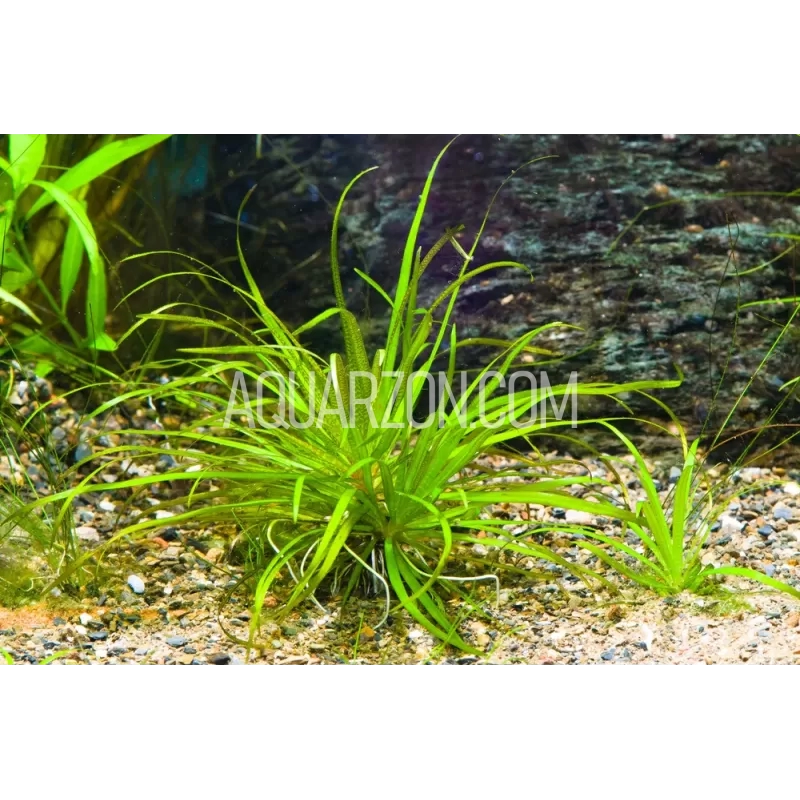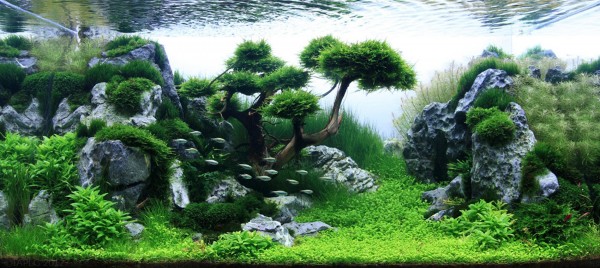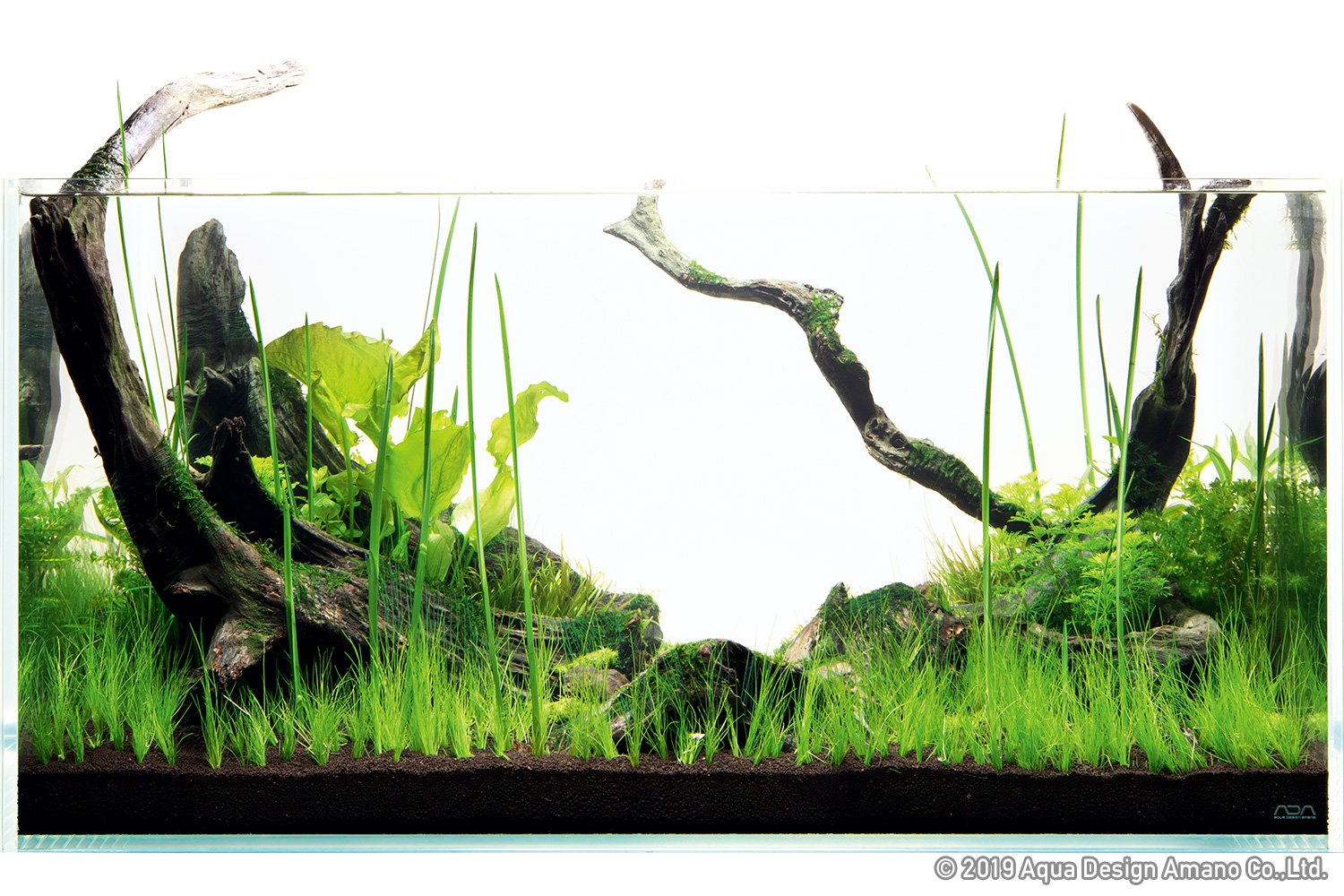Japanese aquarium plants add elegance to tanks. They provide beauty and balance.
These plants are popular for their unique features and versatility. Aquarium enthusiasts admire them for their aesthetic appeal and benefits. They enhance the aquatic environment and promote the well-being of fish. Japanese aquarium plants come in various shapes and sizes.
Some offer vibrant colors, while others bring subtle greenery. They help maintain water quality and oxygen levels. Their presence creates a serene and calming effect. Many aquarists choose them for their easy maintenance. These plants can thrive in different water conditions. Their adaptability makes them ideal for beginners and experts alike. Explore the charm and benefits of Japanese aquarium plants. Discover how they transform ordinary aquariums into mesmerizing underwater landscapes.
Introduction To Japanese Aquarium Plants
Japanese aquarium plants have long been celebrated for their elegance and unique beauty in the world of aquascaping. These plants are often the go-to choice for aquarists looking to create a serene underwater landscape. But what makes them stand out? Let’s dive into the origins, popularity, and unique features that make Japanese aquarium plants a favorite among enthusiasts.
Origins And Popularity
Japan has a rich history of gardening and nature appreciation, which reflects in its aquarium plant cultivation. Many Japanese plants originate from the country’s diverse ecosystems, including mountainous regions and lush forests.
The popularity of Japanese aquarium plants isn’t just due to their beauty. Their adaptability to various water conditions makes them a reliable choice for both beginners and seasoned aquarists.
I remember my first Japanese plant, the Cryptocoryne. It thrived in my tank, requiring minimal care yet adding a touch of tranquility. Have you ever wondered why these plants are favored by aquarists globally?
Unique Features
Japanese aquarium plants are known for their striking colors and textures. They often feature intricate leaves and vibrant hues that create captivating underwater scenes.
These plants are usually hardy, making them ideal for aquascaping. Many require little maintenance, allowing you more time to enjoy your aquarium.
Consider the iconic Java Moss, which effortlessly enhances any tank layout. Its ease of growth and resilience are unmatched. What unique feature of Japanese plants have you found most appealing?
The variety of Japanese aquarium plants ensures you can find the perfect match for your tank. Whether you seek lush greenery or subtle accents, the options are endless. Which plant will you add to your aquarium next?

Credit: www.aquarzon.com
Benefits Of Japanese Aquarium Plants
Japanese aquarium plants offer unique benefits for aquatic enthusiasts. They enhance the beauty and health of aquariums. These plants not only improve the visual appeal but also create a thriving environment for aquatic life.
Aesthetic Enhancements
Japanese aquarium plants transform bland tanks into lush underwater landscapes. Their vibrant colors and varied textures create stunning visual effects. These plants add depth and dimension, turning aquariums into living art.
Small and delicate leaves sway gracefully in water currents. Bold and bright hues catch the eye, making each tank unique. Japanese plants cater to both minimalistic and ornate setups. Their versatility ensures an attractive display.
Ecological Advantages
Japanese aquarium plants play a vital role in tank ecosystems. They help maintain water quality by absorbing harmful chemicals. These plants reduce algae growth, keeping the tank clean and clear.
They provide shelter and breeding grounds for fish and shrimp. Fish find comfort in the dense foliage, reducing stress. Healthy plants improve oxygen levels, promoting better fish health.
Japanese plants contribute to a balanced aquatic environment. Their presence supports biodiversity and enhances overall tank health.
Popular Varieties
When diving into the world of Japanese aquarium plants, you might be amazed at the variety available to enhance your aquatic environment. Popular varieties of these plants not only add beauty but also provide functional benefits to your tank. Whether you’re a seasoned aquarist or a beginner, understanding these plant types can transform your aquarium from ordinary to extraordinary.
Anubias Nana
Anubias Nana is a favorite among aquarists for its resilience and adaptability. This plant thrives in low light conditions, making it perfect for tanks that don’t have intense lighting setups. Its broad, dark green leaves provide an excellent contrast against lighter-colored substrates.
What makes Anubias Nana particularly appealing is its versatility. You can attach it to rocks or driftwood, allowing for creative tank designs. Have you ever tried anchoring them to a piece of driftwood? It creates a stunning visual effect that can be the centerpiece of your aquarium.
Consider the maintenance aspect too. With slow growth rates, you won’t need to prune it often, leaving more time for you to enjoy watching your aquatic ecosystem flourish.
Java Fern
Java Fern is another popular choice that captivates aquarium enthusiasts with its unique appearance and easy care requirements. Its sword-like leaves can grow quite large, making it a focal point in any tank.
One of the remarkable features of Java Fern is its ability to grow in various conditions. Whether your tank has high or low light, this plant can adapt and thrive. Have you noticed how it seems to grow effortlessly even when other plants struggle?
Moreover, Java Fern requires minimal attention. You can anchor it directly onto substrates or decor without needing soil. This makes it an excellent choice for beginners or anyone looking to simplify their aquarium maintenance.
Adding these popular varieties to your aquarium can significantly enhance its aesthetic and functional value. Which one will you choose to add a splash of green to your underwater world?
Setting Up Your Aquarium
Setting up your aquarium is a delightful journey into underwater beauty. The Japanese style aquarium plant layout brings serenity and elegance to your space. It requires thoughtful planning and attention to detail. Let’s explore the essentials needed for a stunning setup.
Choosing The Right Plants
Japanese aquarium plants offer a unique aesthetic. They mimic nature’s simplicity and balance. Opt for plants like Java Moss and Anubias. These are easy to maintain and enhance visual appeal. Consider aquatic ferns for their lush green foliage. They thrive well in most conditions.
Choose plants that complement each other. This creates harmony in your aquarium. Research the growth habits of each plant. This ensures they fit your vision perfectly. It’s important to select plants that suit your tank size.
Essential Equipment
Proper equipment is crucial for a healthy aquarium. A good filter keeps water clean and clear. It helps maintain optimal conditions for plant growth. Lighting is another key factor. LED lights mimic natural sunlight and promote plant health.
Heaters ensure stable temperatures. This is vital for tropical plants. Use a timer for consistent lighting schedules. This helps mimic day and night cycles. A substrate is essential for anchoring plants. Choose one that supports root growth.
Include tools for pruning and maintenance. These keep your plants looking their best. Regular care ensures vibrant and healthy aquatic life. Invest in quality equipment for longevity and reliability.
Plant Care And Maintenance
Caring for Japanese aquarium plants involves maintaining clean water and proper light conditions. Trim dead leaves to promote healthy growth. Regularly check the water’s pH level to ensure a suitable environment.
Caring for and maintaining your Japanese aquarium plants can be a rewarding experience. These plants not only add beauty to your tank but also contribute to a healthier environment for your aquatic life. Proper plant care ensures they flourish and maintain their vibrant colors. Let’s dive into the essentials of plant care and maintenance. ###Water Quality Management
Keeping the water in your aquarium clean is crucial for the health of your Japanese plants. Regularly test the water to maintain appropriate pH levels, which should typically range from 6.5 to 7.5. Use a reliable aquarium water testing kit for this task. Consider your water’s hardness, as Japanese plants generally prefer soft to moderately hard water. You may need to adjust your water parameters using softeners or specific conditioners designed for aquariums. Changing the water frequently, at least 10-20% weekly, helps in removing excess waste and nutrients. This practice prevents algae growth and keeps your plants thriving. Remember, clean water is the backbone of a healthy aquarium. ###Nutrient Requirements
Japanese aquarium plants need a balanced diet, just like any living organism. Providing them with essential nutrients helps them grow lush and healthy. Use liquid fertilizers or root tabs to supply nutrients like potassium, iron, and nitrogen. Observe your plants closely. If you notice yellowing leaves or stunted growth, it might be a sign of nutrient deficiency. Adjust your fertilization routine accordingly to meet their needs. Additionally, consider CO2 supplementation. While not always necessary, adding CO2 can boost plant growth and make your aquarium look like a vibrant underwater garden. This step is especially useful if you have a densely planted tank. Have you ever noticed how a simple change can transform your entire aquarium? Ensuring your Japanese plants receive the right care will make your underwater haven thrive.Credit: tropica.com
Design Ideas For Aquascaping
Explore the serene world of Japanese aquarium plants to enhance aquascaping design. These plants offer elegance and tranquility, creating a peaceful underwater landscape. Incorporate varieties like Java Moss or Anubias for a harmonious blend of color and texture in your aquatic environment.
Designing an aquascape with Japanese aquarium plants can transform any tank into a living piece of art. These plants, known for their elegant simplicity, provide a natural and calming aesthetic. Whether you’re a seasoned aquarist or a beginner, creating a serene underwater garden offers both challenge and reward. But how do you ensure your aquascape stands out? Let’s explore some design ideas that can elevate your aquarium into a masterpiece. ###Creating Balance
Balance is the cornerstone of any stunning aquascape. Imagine walking into a room where everything is perfectly aligned and nothing feels out of place—that’s the harmony you aim for in your aquarium. Start by distributing plant heights and colors evenly. Consider placing taller plants like Vallisneria at the back, while shorter varieties like Japanese Dwarf Hairgrass sit at the front. This not only creates depth but also ensures every plant gets enough light. Try experimenting with different plant textures and shades of green to add layers of interest. The first time I arranged my aquarium, I realized how a slight imbalance could make the whole setup look chaotic. I found that grouping plants in odd numbers often looked more natural. Have you tried arranging your plants in this way? ###Incorporating Hardscape
Adding hardscape elements like rocks and driftwood can dramatically change the look of your aquascape. They serve as the framework around which your plants will thrive. Choose pieces that complement the Japanese aesthetic—think sleek and minimalistic. Strategically place driftwood to create focal points. Use rocks to build caves or terraces that provide hiding spots for fish. While placing these elements, ensure they don’t overshadow the plants. I once added a piece of driftwood that was too large, and it dwarfed my plants. It taught me the importance of scale. Have you ever had a hardscape element that overwhelmed your aquarium? Incorporate these elements with a keen eye on proportion and scale. Play around with positions before settling on the final arrangement. This will help you achieve a natural look that enhances rather than detracts from your plants’ beauty. Creating an aquascape with Japanese plants can be a rewarding endeavor. By focusing on balance and integrating hardscape thoughtfully, your aquarium can become a captivating underwater scene that mesmerizes anyone who sees it. What unique design ideas have you tried in your aquascaping journey?Troubleshooting Common Issues
Japanese aquarium plants often face issues like yellowing leaves or slow growth. Ensure proper lighting and balanced nutrients to keep them healthy. Regular water changes and checking for pests can help maintain vibrant and thriving plants.
When nurturing your aquarium plant Japanese, you might encounter some common issues that can hinder growth and aesthetic appeal. Understanding these problems can be the key to maintaining a healthy aquatic environment. Whether it’s battling stubborn algae or addressing plant health concerns, troubleshooting these issues is essential for vibrant and thriving plants. Let’s dive into some practical solutions you can apply to keep your aquarium flourishing.Algae Control
Algae can become a persistent nuisance in your aquarium. It often clings to plant leaves, blocking sunlight and nutrients. To manage algae, consider reducing light exposure by adjusting your tank’s lighting schedule. Regularly check your water quality. High nitrate levels can fuel algae growth, so ensure you perform frequent water changes. Adding algae-eating fish or snails can also help keep this issue in check. I once struggled with algae in my tank, and it felt like a never-ending battle. But balancing light, nutrients, and introducing algae-eaters transformed my aquarium landscape. What simple changes can you make today to combat algae?Plant Health Concerns
Yellowing leaves or stunted growth can signal plant health issues. Ensure your plants receive adequate nutrients by checking fertilizer levels. A balanced aquarium fertilizer can boost plant vitality. Consider the water temperature and pH levels. Japanese aquarium plants thrive in specific conditions, and deviations can stress them. Adjusting these parameters might be the answer to your plant’s health woes. I remember noticing my plants losing their color, and it was disheartening. After tweaking the water pH and adding the right nutrients, they bounced back with incredible vibrancy. Have you checked your tank’s parameters lately? What might your plants be telling you about their health?
Credit: www.aquariumarchitecture.com
Frequently Asked Questions
Does Hydrocotyle Japan Need To Be Planted?
Hydrocotyle Japan doesn’t need planting; it can float freely or be anchored. Ensure it receives adequate light for growth. Regular trimming helps maintain its shape. This aquatic plant thrives in various tank conditions, enhancing aquarium aesthetics with its lush greenery.
Keep water clean for optimal health.
What Is Japanese Pennywort?
Japanese pennywort, scientifically known as Hydrocotyle japonica, is a perennial herb. It grows in damp areas, featuring round leaves and slender stems. Often used in traditional medicine, it is known for its potential health benefits. Its lush green foliage makes it popular in aquascaping and gardening.
How Do You Care For A Hydrocotyle Plant?
Water Hydrocotyle plants regularly, keeping the soil consistently moist. Ensure bright, indirect sunlight. Use well-draining soil to prevent root rot. Fertilize monthly during the growing season. Trim overgrown stems to maintain shape.
Does Hydrocotyle Need Co2?
Hydrocotyle can grow without CO2, but CO2 supplementation promotes faster and healthier growth. It’s ideal for optimal results.
Conclusion
Japanese aquarium plants bring beauty and tranquility to your tank. They create a soothing environment for fish and viewers alike. With proper care, these plants thrive and enhance your aquarium’s charm. Their lush greenery provides natural hiding spots for fish.
Easy to maintain, they suit both beginners and experts. Choosing Japanese plants adds elegance to your setup. Enjoy watching your aquatic world flourish. Remember, a balanced tank promotes healthy plant growth. So, start your journey with Japanese aquarium plants today.
Experience the peaceful ambiance they offer. Your aquatic life will thank you.





